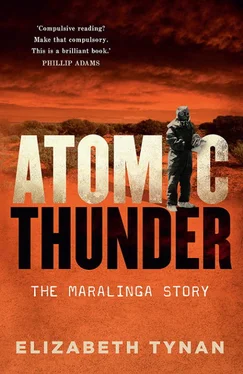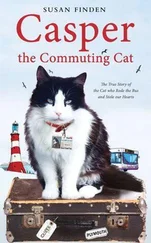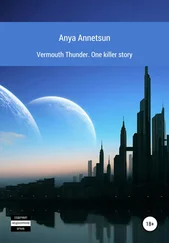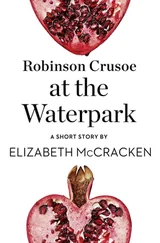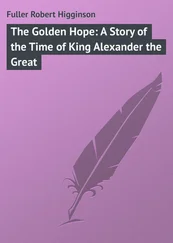Operation RADSUR — A RADiological SURvey of both the Maralinga and the Emu Field atomic test sites carried out by the AWRE in October and November 1966. RADSUR was used as the basis for Operation Brumby.
Plumes — Clouds of radioactive material from an explosion, as well as the visible fallout after the radioactive material is carried back to the ground. The scientists on the 1984 field trip to Maralinga could detect plumes in the form of elongated hand-shapes on the ground from each detonation of the Vixen B experiments in the 1960s, because the plutonium carried back down still sat close to the surface.
Plutonium (Pu) — A dense, silvery radioactive element that does not occur naturally but is made in a reactor by irradiating uranium with neutrons. It was first produced in 1940. Plutonium has 13 known isotopes, of which plutonium-239 has the longest half-life (24 400 years). A fissile material, plutonium-239 can be used as the core of a nuclear weapon.
Quartz fibre electrometer — Dosimeters worn in the pocket like pens and read by looking through a lens to observe the position of a quartz fibre against a scale.
Radioactivity — The property of certain radionuclides of spontaneously emitting particles and/or x-ray or gamma ray radiation, or of undergoing spontaneous fission. The rate of decay is specific to a given species of radionuclide and cannot be changed by known physical or chemical processes.
Radionuclides — Radioactive nuclides.
Sievert — The unit of biological absorption of ionising radiation, expressed as dose equivalent. A millisievert is one one-thousandth of a sievert. At the time of the British nuclear tests in Australia the standard measurement of dose equivalence was the rem.
Stochastic effects — Medical conditions associated with ionising radiation, such as cancer or hereditary illness, induced at random but with no threshold radiation dose, for which probability (but not severity) increases with increasing doses of radiation. These effects may show up many years after exposure. Because stochastic effects can occur in individuals who have not been exposed to radiation above background levels, it is impossible to determine for certain whether an occurrence of cancer or genetic damage was due to a specific exposure.
Thermonuclear weapon — A nuclear device that relies on raising the temperature of a mixture of deuterium and tritium nuclei to above 10 million degrees Celsius, at which point nuclear fusion reactions occur. This type of weapon is also known as a hydrogen bomb.
Warhead — The explosive head of a bomb.
Yield — The amount of energy generated by a nuclear explosion, usually expressed in kilotonnes (for fission devices) or megatonnes (for fusion devices). A kilotonne is equivalent to 1000 tonnes of TNT, and a megatonne is equivalent to 1 million tonnes of TNT.
PROLOGUE
Arnold, Lorna & Smith, Mark, Britain, Australia and the Bomb: The Nuclear Tests and Their Aftermath , 2nd edn, Palgrave Macmillan, New York, 2006.
Beale, Howard, Minister for Supply, ‘Atomic Tests in Australia’, top-secret Cabinet briefing document, submission no. 73, Canberra, 11 August 1954, Malone files.
Curr, EM, ‘Port Essington’, in Australian Race: Its Origin, Languages, Customs, Place of Landing in Australia, and the Routes by Which It Spread Itself over That Continent , John Ferres, Government Printer, 1887.
Macintyre, Stuart, A Concise History of Australia , 2nd edn, Cambridge University Press, Port Melbourne, 2004.
Maloney, Sean M, Learning to Love the Bomb: Canada’s Nuclear Weapons during the Cold War , Potomac Books, 2007.
Milliken, Robert, No Conceivable Injury , Penguin, Ringwood, 1986.
‘Nuclear colonialism’, Healing Ourselves and Mother Earth, www.h-o-m-e.org/nuclear-colonialism.html. Accessed 23 August 2014.
Research and Development Branch, Department of Supply, minutes of meeting, Swanston Street, Melbourne, 25 November 1953, National Archives of Australia (NAA): A6456, R145/011.
Royal Commission into British Nuclear Tests in Australia, Conclusions and Recommendations (JR McClelland, J Fitch, WJA Jones), AGPS, Canberra, 1985.
Royal Commission into British Nuclear Tests in Australia, Report (JR McClelland, President), 2 vols, AGPS, Canberra, 1985.
1 MARALINGA BURIED, UNCOVERED
Anderson, Ian, ‘Britain’s dirty deeds at Maralinga’, New Scientist , 12 June 1993, pp. 12–13.
Arnold, Lorna & Smith, Mark, Britain, Australia and the Bomb: The Nuclear Tests and Their Aftermath , 2nd edn, Palgrave Macmillan, New York, 2006.
Australia, Senate, Debates , questions without notice (to Peter Walsh from Senator Graham Maguire), plutonium residues, Maralinga, 31 May 1984, p. 2227.
Beadell, Len, Blast the Bush , Rigby Limited, Adelaide, 1967.
Bernstein, Jeremy, Plutonium: A History of the World’s Most Dangerous Element , UNSW Press, Sydney, 2001.
Blakeway, Denys & Lloyd-Roberts, Sue, Fields of Thunder: Testing Britain’s Bomb , George Allen & Unwin, London, 1985.
Brown, Paul, ‘British nuclear testing in Australia: performing the Maralinga experiment through verbatim theatre’, Journal and Proceedings of the Royal Society of New South Wales , vol. 139, 2006.
Burns, Peter & Williams, Geoff, tape recording of interview with Ian Anderson, 1993 (exact date unknown), Anderson files.
Burns, Peter & Williams, Geoff, interview with author, ARPANSA, Melbourne, 15 April 2004.
Cawte, Alice, Atomic Australia 1944–1990 , UNSW Press, Kensington, 1992.
Connor, Steve, ‘WA atom blast was far bigger, UK says’, Sydney Morning Herald ( SMH ), 26 May 1984, p. 3.
Department of Education, Science and Training, ‘Rehabilitation of Former Nuclear Tests Sites at Emu and Maralinga (Australia) 2003’ (MARTAC Report), Commonwealth of Australia, Canberra, 2002.
Lokan, KH, Head of ARL, evidence to Joint Committee on Public Works, 23 February 1995, in minutes of evidence relating to Maralinga Rehabilitation Project, Parliament of the Commonwealth of Australia, 1995.
MARTAC Report, see Department of Education, Science and Training.
Moroney, John, annotated draft of Ian Anderson’s New Scientist story, unpublished, 2 June 1993, Anderson files.
Ophel, TR, ‘Sir Ernest William Titterton’, Obituary, ANU Reporter , 23 February 1990, p. 4.
Pearce, Noah, ‘Final Report on Residual Radioactive Contamination of the Maralinga Range and the Emu Site’, AWRE report no. 01–16/68 (Pearce Report), UK Atomic Energy Authority, January 1968. Edited version released by Australian Department of National Development, May 1979. Full version tabled by Australian Senate, May 1984.
Pearce Report, see Pearce, Noah.
Resture, Jane, ‘Return to Maralinga’, Jane Resture’s Oceania Page, 2012, www.janesoceania.com/christmas_about1/index.htm. Accessed 23 August 2014.
Royal Commission into British Nuclear Tests in Australia, Conclusions and Recommendations (JR McClelland, J Fitch, WJA Jones), AGPS, Canberra, 1985.
Royal Commission into British Nuclear Tests in Australia, Report (JR McClelland, President), 2 vols, AGPS, Canberra, 1985.
Stanton, John, ‘Plutonium dumps a risk “for thousands of years”’, The Australian , 25 May 1984, p. 2.
Toohey, Brian, ‘Killen warns on plutonium pile’, Australian Financial Review , 5 October 1978.
Читать дальше
